AI in Composting: Emission Control Insights
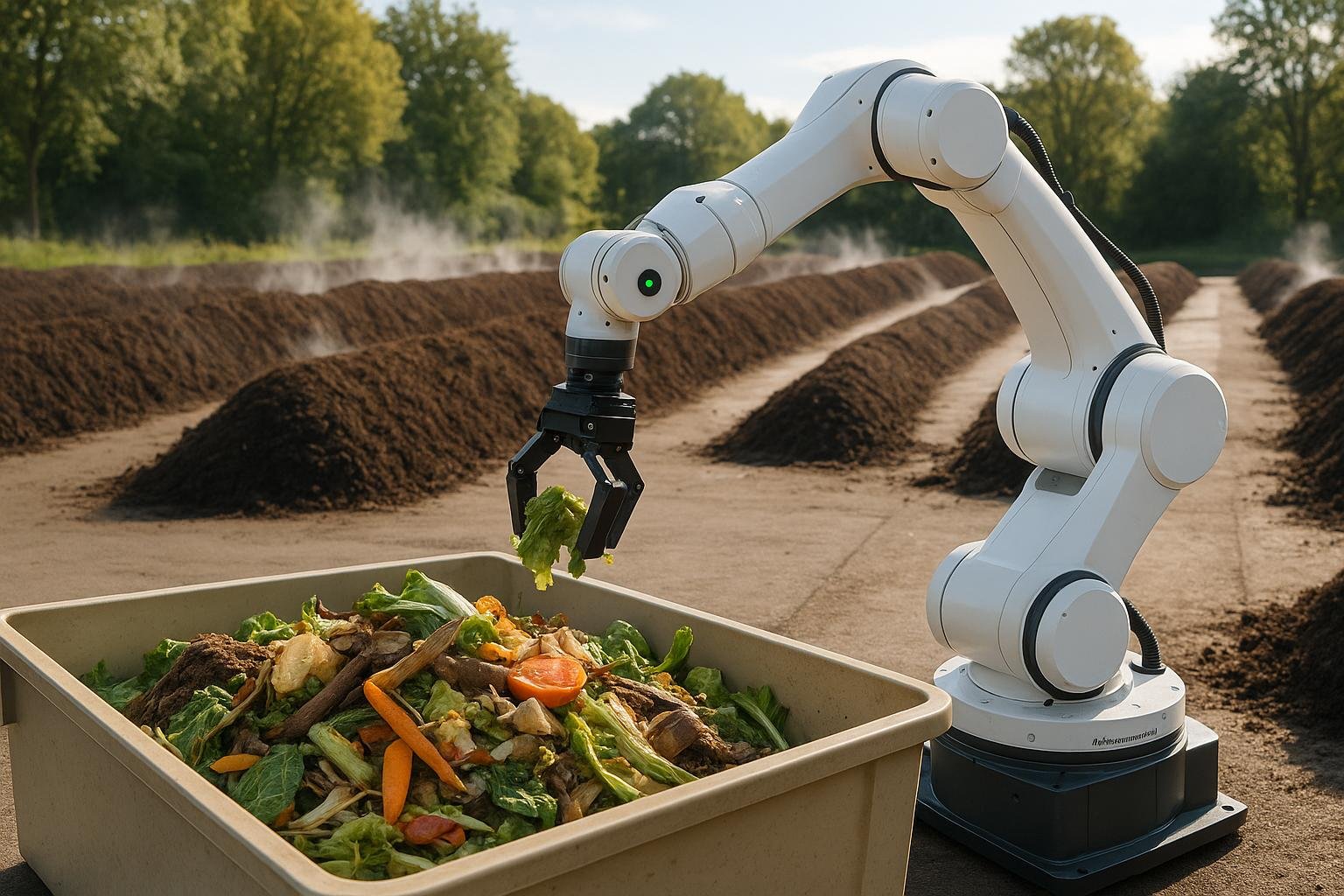
AI is transforming composting by cutting emissions, improving efficiency, and enhancing compost quality. Here's what you need to know:
- Emissions Reduction: AI can lower ammonia (NH₃) emissions by up to 30% using real-time monitoring and predictive models.
- Improved Sorting: AI-driven systems sort compostables with over 95% accuracy, reducing contamination and waste rejection.
- Cost and Time Savings: Automated adjustments replace costly lab tests and manual monitoring, saving time and labor.
- Practical Applications: Cities like San Antonio have eliminated organic waste rejections using robotic sorting, and facilities like Washington State University’s composting research are advancing emission control methods.
Quick Comparison:
| Aspect | AI Methods | Traditional Methods |
|---|---|---|
| Emission Prediction | R² > 0.9 for NH₃ and CO₂ | Inconsistent, R² ranges from 0.1 to 0.9 |
| Sorting Accuracy | >95% with machine learning | Manual sorting often leads to contamination |
| Process Control | Real-time automated adjustments | Slower, human-controlled |
| Cost Efficiency | Saves time and reduces lab costs | Relies on expensive lab testing |
AI is modernizing composting, from industrial facilities to home gardens, by reducing emissions, saving resources, and improving outcomes. Keep reading to explore how these technologies work and the challenges they address.
No extra bins or trucks - Ramsey and Washington counties to expand AI food compost program

AI Technologies for Emission Control in Composting
AI-powered tools are reshaping how composting facilities manage emissions. By combining advanced sensors with smart algorithms, these systems bring precision to what was once a process of trial and error. The result? Better emission control and improved compost quality.
Real-Time Emission Monitoring Systems
At the heart of AI-driven emission control are real-time monitoring systems. These systems rely on a network of sensors to track critical factors like temperature and moisture continuously. The data collected is processed by AI algorithms, which analyze patterns and provide actionable insights to make immediate adjustments [1].
Modern AI systems take this a step further by integrating machine learning with sensor data. This allows facilities to monitor emissions while ensuring compost quality remains high [1]. Specialized equipment now measures physical, chemical, and even perceptual parameters in real time, providing alerts when emission spikes are likely. These systems adhere to established standards such as EN 13725 and ASTM 679, ensuring accuracy and consistency [5].
One standout example is Scentroid's SIMS3 software. This tool uses emission data to assess whether odor complaints are valid. It even employs a technique called "Event Triangulation" to locate unknown emission sources, offering a practical solution to a common challenge in composting operations [6].
AI doesn’t just react to current conditions - it also predicts future trends, enabling facilities to stay ahead of potential issues.
Predictive Models for Emission Forecasting
Predictive models play a key role in maintaining low emission levels. By analyzing process data, these models forecast the behavior of various gases, offering a faster and more cost-effective alternative to traditional lab analyses [4]. AI methods like Random Forests, Artificial Neural Networks, and Bayesian models have achieved impressive accuracy, often with R² values above 0.9, in predicting emissions [4].
For example, an Artificial Neural Network used factors such as temperature, pH, and carbon-to-nitrogen ratio to predict ammonia (NH₃) emissions during composting, achieving an R² score over 0.97 [4]. Similarly, an XGB model demonstrated high accuracy, with R² values of 0.966 for NH₃ emissions and 0.912 for global warming potential [2]. These predictive capabilities not only save time and money but also encourage the adoption of advanced composting methods compared to traditional approaches [4].
AI-Enhanced Sorting and Process Optimization
AI doesn’t stop at monitoring and predicting - it also improves the composting process through smarter sorting. By ensuring only suitable materials enter the composting system, AI-driven sorting reduces contamination and enhances compost quality [3][9]. These systems can sort waste with over 95% accuracy, significantly lowering the risk of emissions caused by improper materials [8]. One example comes from a UK team that developed a hyperspectral imaging and machine learning system capable of sorting compostables with 99% accuracy based on type, system requirements, and composting duration [3].
The benefits of AI sorting are evident in real-world applications. In San Antonio, Texas, robotic sorting introduced in 2024 has eliminated the rejection of organic waste truckloads, a sharp improvement over manual sorting, which was less efficient and more costly [3]. Similarly, Alameda County Industries (ACI) saw a 59% reduction in labor costs over three years by using EverestLabs' robots, which processed approximately 30 million objects during this period [8].
"Our AI provides accurate data on the shape, size, weight, material, packaging type, commodity value, and even brand information of every recyclable flowing through the plant."
- JD Ambati, Founder and CEO, EverestLabs [8]
AI sorting systems are incredibly fast, handling thousands of picks per minute on conveyor belts moving at speeds of 600 feet per minute [8]. Beyond sorting, these systems optimize the composting process itself. By adjusting conditions like heat and moisture in real time, they create an ideal environment for composting while minimizing unwanted gases and odors [3].
Research and Applications
AI technology is making waves in the composting industry, driving measurable improvements across the U.S. From university research labs to bustling cities, these advancements are enhancing emission control and streamlining operations. Case studies from different regions highlight how AI is reshaping composting practices.
Case Studies in AI-Driven Composting
At the forefront of this shift is Washington State University's Puyallup Research Facility, which plays a vital role in bridging the gap between regulatory agencies and compost operators. By providing critical data, the facility ensures that composting can expand without compromising air quality. Doug Collins, a soil scientist with WSU Extension, underscores its importance:
"This state-of-the-art facility helps connect regulators and compost facility operators. It gives both sides the data they need to expand composting applications without sacrificing air quality." [10] [11]
Meanwhile, researchers at WSU's Pullman campus are refining emission monitoring techniques. Adeniyi Olufemi Adesina, Lead Analytical Chemist at the Laboratory for Atmospheric Research, explains their approach:
"We're combining regulatory methods with real-time emission measurements in the field to enhance emission measurement accuracy." [10]
In San Antonio, Texas, AI has revolutionized municipal composting. Since introducing robotic sorting with machine vision in 2024, the city has eliminated organic waste rejections. Previously, minor contaminants often led to waste being discarded due to inefficiencies in manual sorting. [3]
GreenTech Solutions is also contributing to progress by developing AI systems that use sensors and machine learning to optimize compost quality and reduce emissions. Their early tests show that AI-controlled adjustments to moisture and oxygen levels can cut NH3 emissions by 30% compared to traditional methods. [1]
Across the Atlantic, a UK research team has created a hyperspectral imaging system paired with machine learning to sort compostables with 99% accuracy. This system categorizes materials based on type, composting needs, and duration, setting a high bar for sorting efficiency. [3]
AI Methods vs. Standard Methods
When comparing AI-driven composting to traditional methods, the advantages of AI become clear. Here's how they stack up across key areas:
| Aspect | AI Methods | Traditional Methods |
|---|---|---|
| Emission Prediction Accuracy | R² values of 0.95 for NH3 and 0.81 for CO2 using Bayesian Neural Networks | R² values ranging from 0.1 to 0.9 with inconsistent results |
| Sorting Accuracy | 99% accuracy with hyperspectral imaging and machine learning | Manual sorting often leads to rejected waste due to contamination |
| Process Control | Real-time automated adjustments based on sensor data | Human-controlled conditions with slower response times |
| Labor Requirements | Automated monitoring and adjustments | Requires manual monitoring and testing |
| Cost Efficiency | Fully automated systems with instant online results | Relies on costly, time-consuming lab tests |
AI-powered tools, such as Artificial Neural Networks and Decision Trees, have proven effective in predicting emissions like CO, CO2, NH3, and H2S. In contrast, traditional mathematical models often yield inconsistent results. Additionally, AI systems provide immediate online results for greenhouse gas predictions, eliminating the need for expensive lab analyses. This efficiency allows facilities to handle more waste while maintaining higher quality standards.
These examples demonstrate that AI is more than just a concept - it's actively transforming composting operations across the U.S. and beyond, delivering tangible benefits in efficiency, accuracy, and environmental impact.
sbb-itb-4d6a8dd
🚀 Ready to Reinvent Your Garden?
Join thousands of homeowners who have transformed their gardens using our AI design tool. Upload one photo to explore endless possibilities.
Get your AI garden designs →Challenges and Opportunities in AI-Assisted Composting
AI has the potential to transform how emissions are managed in composting, but it's not without its hurdles. Recognizing these challenges - and the possibilities they bring - can help composting facilities adopt AI-driven solutions more effectively.
Current Challenges in AI Implementation
One of the biggest issues is data quality and availability. Machine learning models need large, reliable datasets to perform well, but many composting facilities simply don’t have the historical data required. Researchers emphasize that building a more extensive dataset is key to improving the accuracy of predictions [7].
Another challenge is model accuracy. While Bayesian Regularized Neural Networks have shown high R² scores in controlled environments [7], replicating this level of precision in real-world composting is tough. The intricate relationships between various composting parameters make it hard to achieve consistent results outside of lab settings.
Infrastructure costs are another major hurdle, especially for smaller composting operations. Advanced systems like those from GreenTech Solutions require sophisticated sensors and machine learning tools, which come with high upfront costs [1]. Although initial tests have demonstrated a 30% reduction in NH₃ emissions compared to traditional methods, the financial feasibility varies greatly between small-scale and industrial setups.
For facilities not originally designed with AI in mind, retrofitting can be both complex and expensive. Moreover, since many AI models need field testing to improve their accuracy, facilities often have to balance serving as experimental sites while maintaining operational efficiency [7].
Future Opportunities for Development
Despite these obstacles, there are exciting developments on the horizon. Precision composting, which combines IoT, AI, and automation, is making processes more efficient while cutting costs [12]. This shift is turning composting into a science, where every step is fine-tuned for optimal results.
Progress in emission prediction models is another promising area. Early demonstrations of machine learning models that predict CO and H₂S emissions during composting have paved the way for more comprehensive management systems [7]. Future advancements could expand these models to include a wider range of gases and environmental factors.
In addition, the growing food waste management market - projected to increase by $9.13 billion between 2024 and 2028 - could lower costs through economies of scale, making AI systems more accessible for composting facilities [13].
Research is also diving into specialized applications. For instance, machine learning models are being developed to forecast emissions based on specific feedstock characteristics. This could lead to more targeted strategies for controlling emissions [7].
These innovations are not just for large-scale facilities; they’re also influencing smaller, sustainable practices, including home gardening.
AI and Garden Design
AI is making waves beyond industrial composting. It’s also enhancing sustainable gardening by helping everyday users improve their composting practices. Tools like AIGardenPlanner allow gardeners to upload photos of their gardens and receive tailored plant recommendations based on their location, climate, and preferences. By linking compost quality to garden productivity, these platforms guide users in creating compost that meets their plants' specific nutritional needs.
This integration forms a closed-loop system that supports sustainability goals [12]. High-quality compost improves soil health, which, in turn, boosts garden productivity. When gardeners understand their plants' needs through AI insights, they can adjust their composting efforts to produce better soil amendments, reducing waste and enhancing results.
As community composting initiatives grow, AI-powered tools could play a bigger role in educating and engaging the public [12]. By showing the tangible benefits of composting, these platforms encourage more people to get involved in local programs and adopt eco-friendly habits.
The broader integration of AI - from industrial composting to individual garden planning - creates opportunities for sharing data and refining processes. This connected ecosystem not only improves emission control but also optimizes the cycle from waste to garden, benefiting both the environment and local communities.
Conclusion and Key Takeaways
AI is reshaping how we control emissions in composting by bringing precision through data-driven methods. Studies show that AI-powered systems can achieve impressive accuracy in emission predictions, with some machine learning models reaching R² values of 0.95 for ammonia (NH₃) and 0.81 for carbon dioxide (CO₂) [4]. Beyond prediction, these systems can cut NH₃ emissions by roughly 30% compared to traditional approaches [1].
Tools like the Bayesian Regularized Neural Network enable facilities to make real-time adjustments, significantly reducing the release of harmful gases. The real power of AI lies in its ability to process vast and varied datasets, uncovering connections that might otherwise go unnoticed [14]. This not only boosts operational efficiency and reduces costs but also enhances the quality of compost, benefiting everyone from industrial facilities to home gardeners.
The future of composting is heading toward even greater precision with the integration of IoT sensors, machine learning, and automated controls. As food waste management evolves and economies of scale grow, AI systems are becoming more accessible, even for smaller composting operations.
AI in composting is more than just a technological step forward - it’s a key to sustainable waste management. By reducing greenhouse gas emissions, improving air quality, and contributing to a circular economy, AI is modernizing composting on every level. For example, platforms like AIGardenPlanner bring these advancements to home gardeners, helping them optimize both garden layouts and compost quality. Whether on a large scale or at home, AI is bridging the gap between emission control and personalized sustainability practices, pushing composting into a new era.
FAQs
How does AI enhance compost sorting accuracy and efficiency compared to traditional methods?
AI plays a crucial role in improving compost sorting by automating the identification and categorization of materials. With an accuracy rate exceeding 95%, it minimizes human error and dramatically accelerates the process, outperforming traditional manual methods.
By taking over sorting tasks, AI not only saves valuable time but also delivers consistent results. This consistency helps manage emissions more effectively and enhances the overall efficiency of composting operations.
What challenges do composting facilities face when using AI to control emissions?
Composting facilities face a number of hurdles when integrating AI into their emission control strategies. One major challenge is the difficulty of accurately monitoring emissions, as sensor coverage can be limited and detecting harmful gases like ammonia often proves complex. On top of that, facilities must tackle contamination issues, manage persistent odors, and limit the spread of bioaerosols, all while dealing with changing environmental conditions.
Even with these challenges, AI technologies offer promising opportunities to fine-tune operations, cut emissions, and enhance efficiency across composting processes.
How can AI improve composting for home gardeners and small-scale operations?
AI has the potential to transform composting for home gardeners and small-scale operations by offering real-time tracking of essential factors like temperature, moisture levels, and airflow. This helps maintain the ideal conditions for composting, cuts down on harmful emissions, and improves the quality of the finished compost.
On top of that, AI can predict when the compost is ready for use, making the process smoother and more efficient. By reducing greenhouse gas emissions and simplifying the overall workflow, AI makes composting easier, more environmentally friendly, and budget-friendly. These advancements make it simpler for small-scale users to embrace sustainable practices with confidence and success.
Related posts
Related Articles
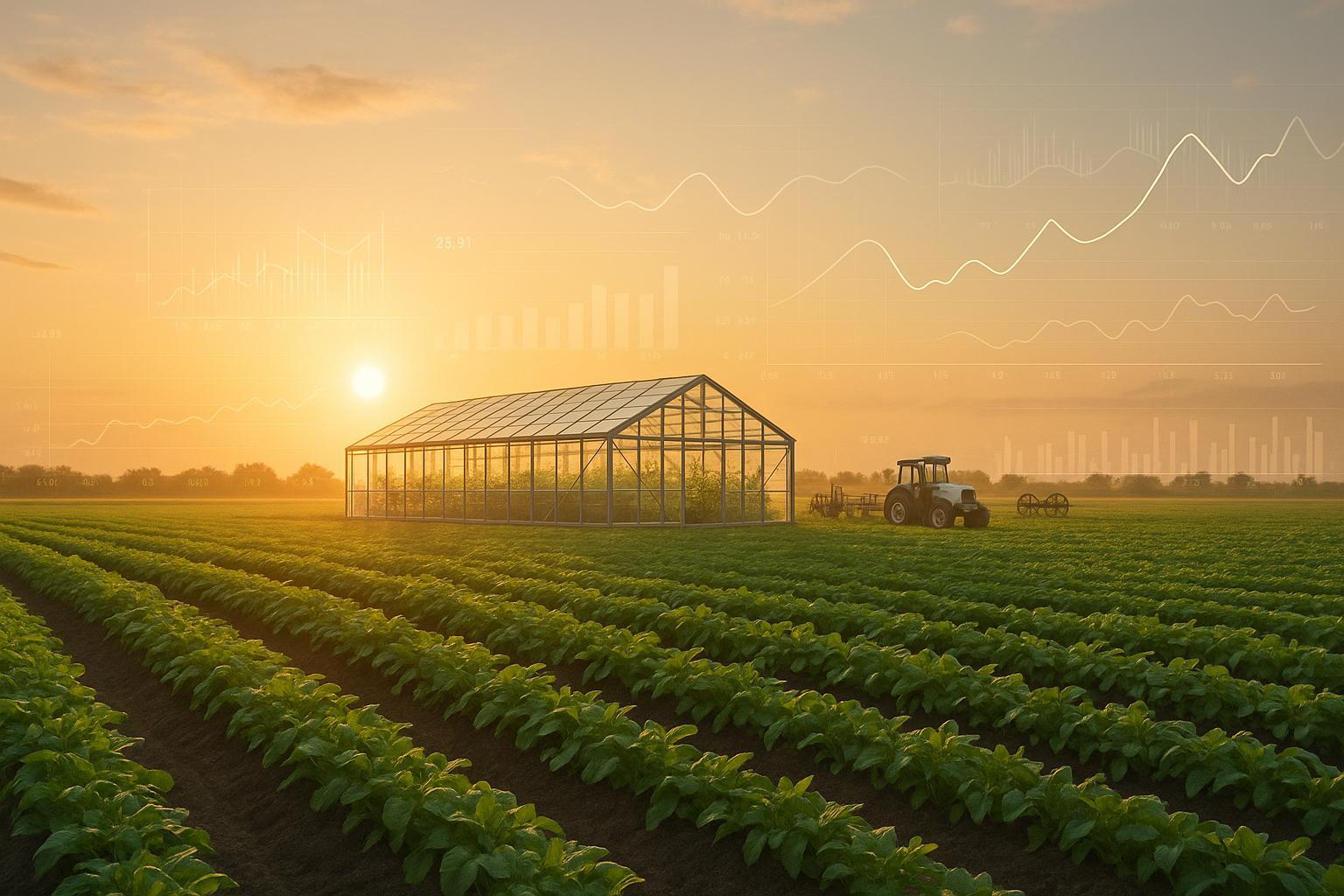
How Machine Learning Models Forecast Plant Growth
Explore how machine learning revolutionizes plant growth predictions, optimizing resources and improving yields for farmers and gardeners alike.
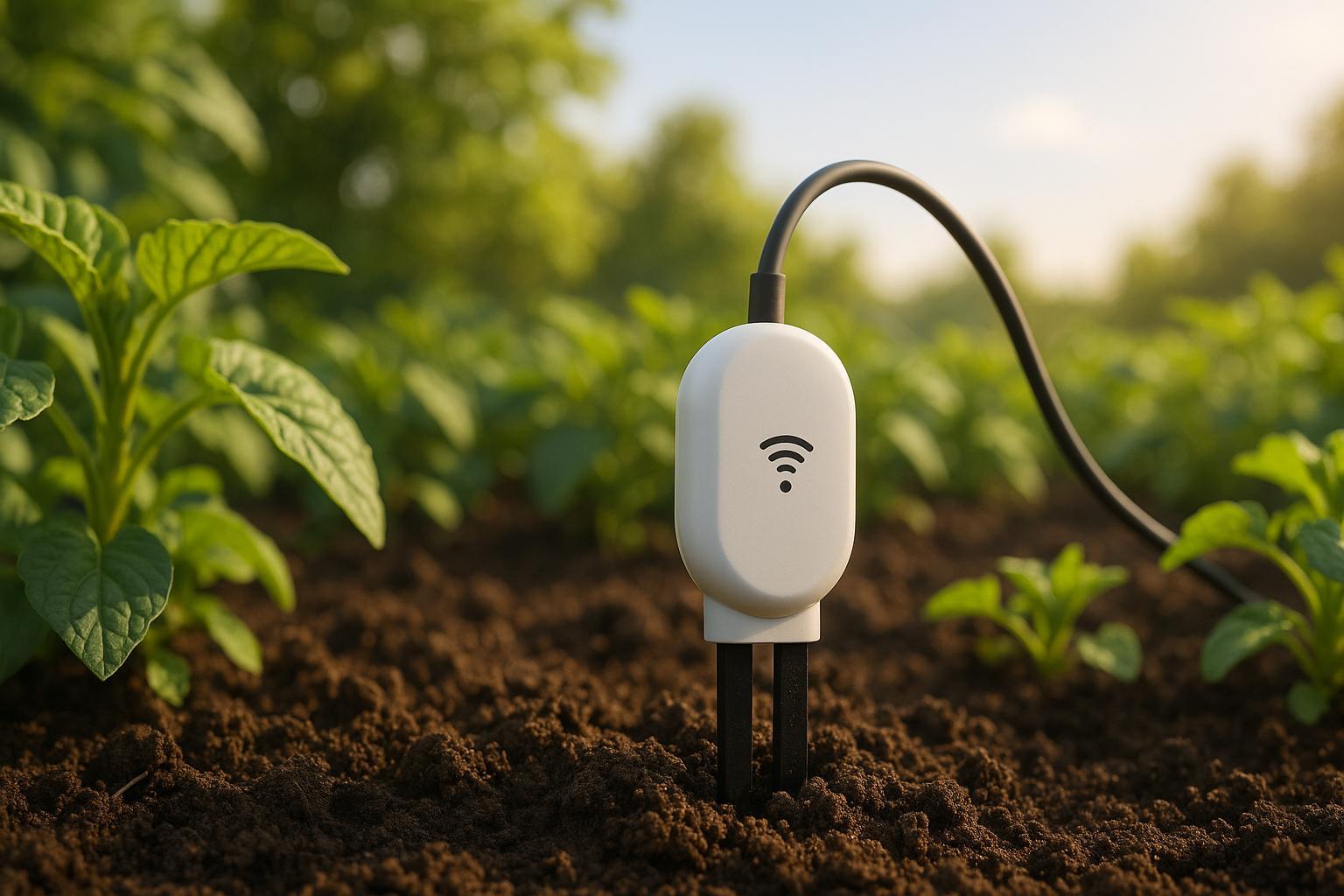
How Soil Sensors Work with Cloud Irrigation
Explore how soil sensors and cloud irrigation systems optimize water usage, enhance plant health, and simplify garden management.
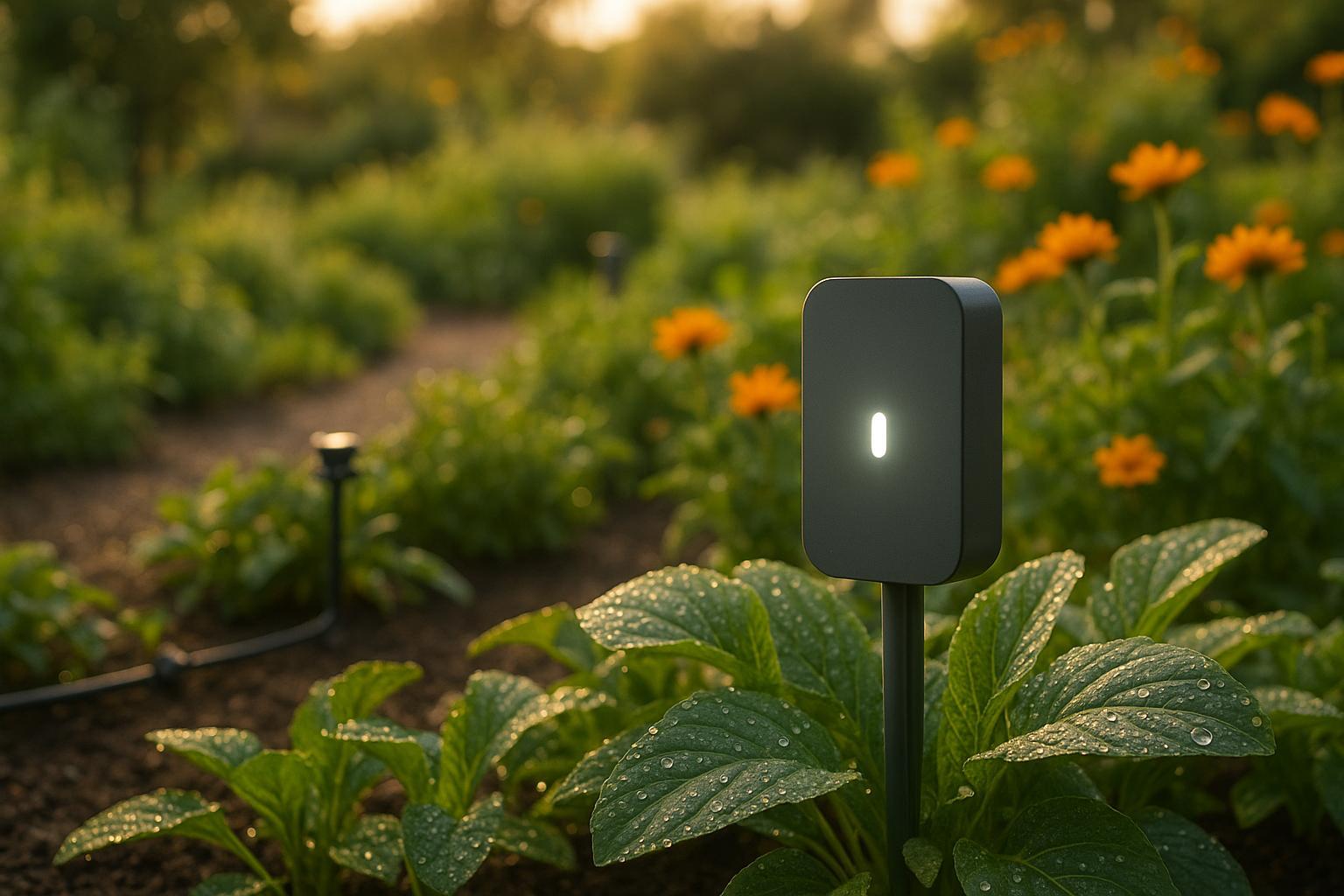
AI Sensor Fault Detection for Gardens
Explore how AI-driven sensor fault detection enhances garden management by ensuring accurate data for pest control and irrigation.
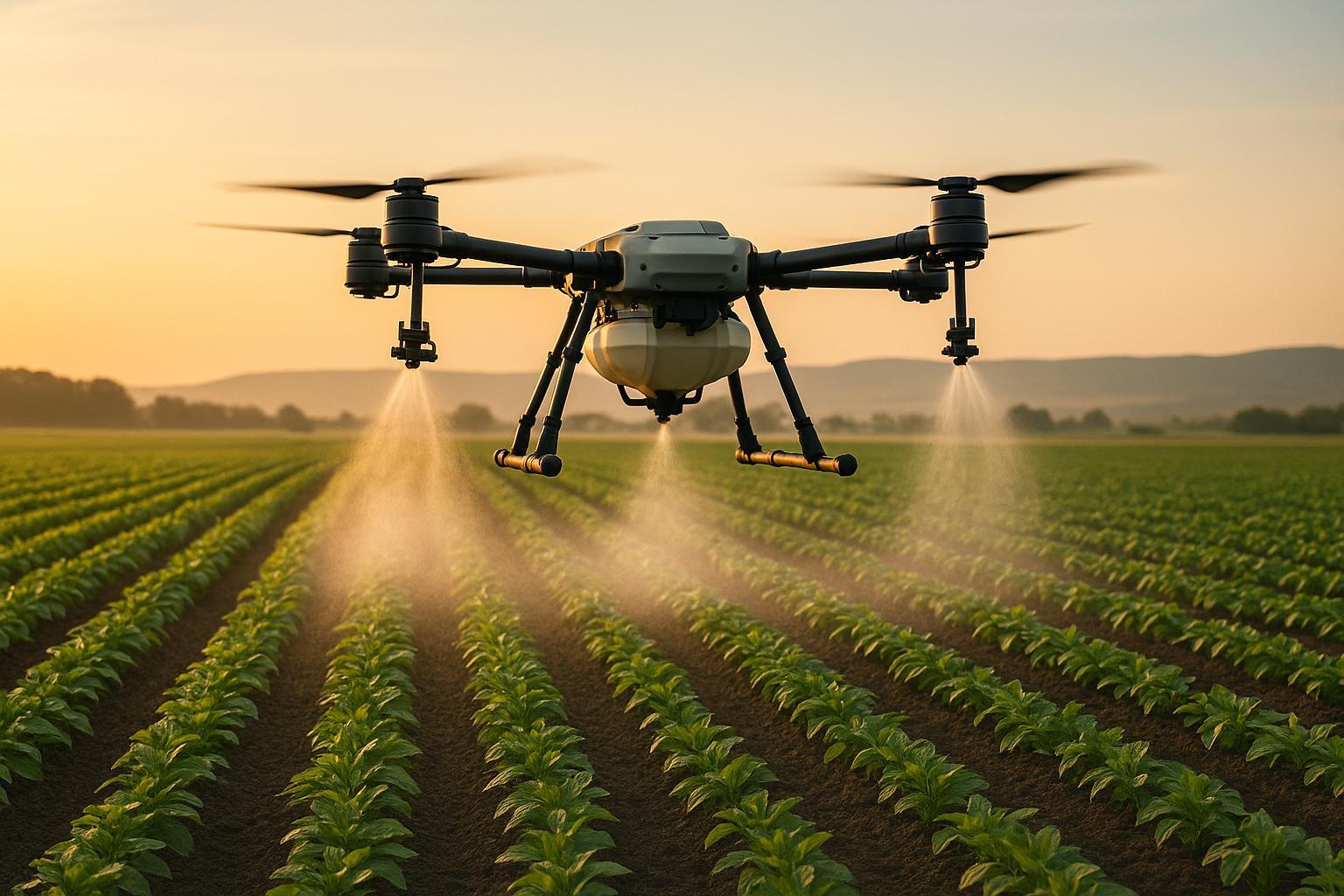
Precision Spraying: AI Drift Reduction Tips
Explore how AI technology enhances precision spraying in agriculture, reducing pesticide drift and improving efficiency for sustainable farming.
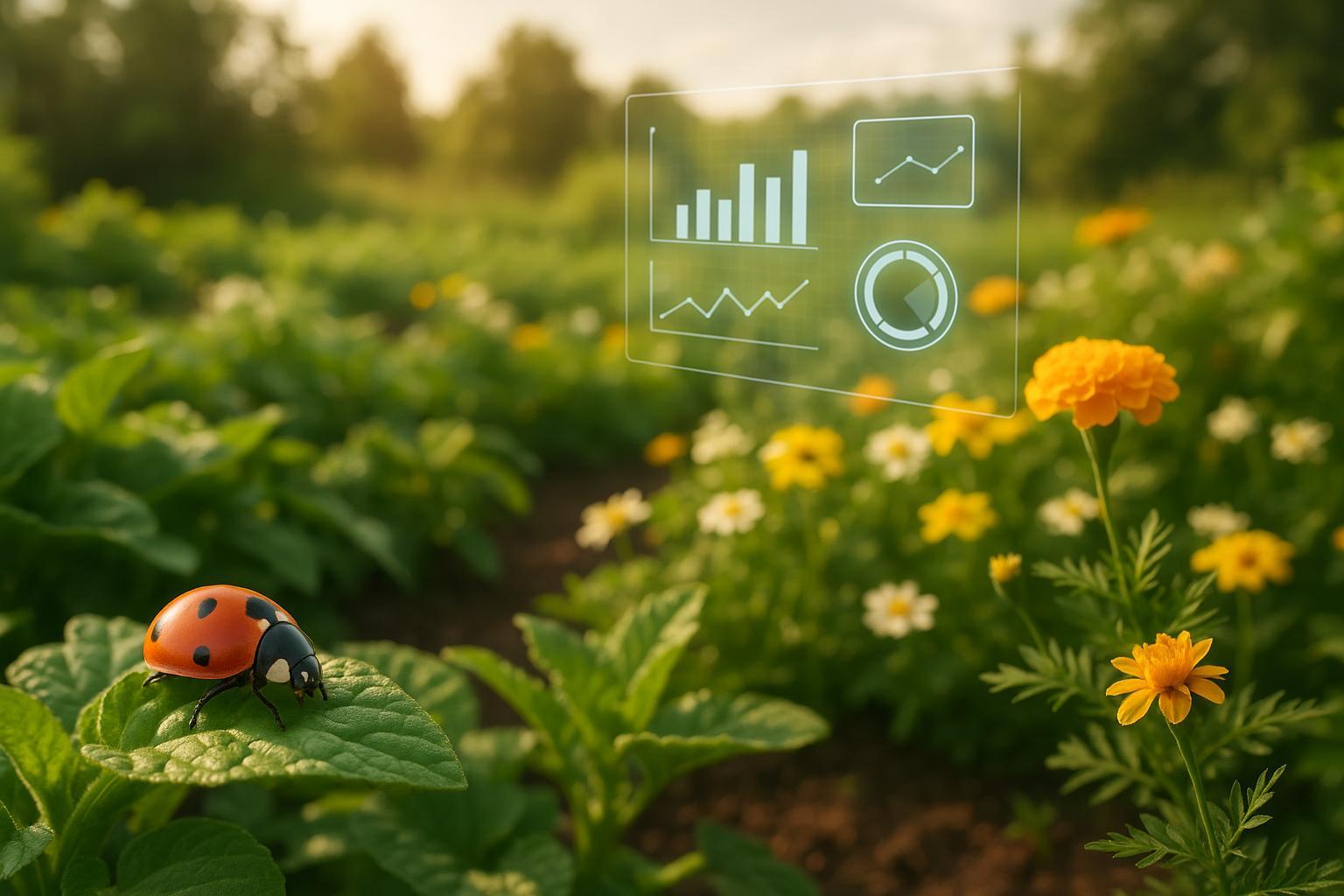
AI and Biological Controls: How They Work Together
Explore how AI enhances biological pest control, promoting sustainable gardening while effectively managing pests with minimal environmental impact.

10 Indigenous Gardening Practices by Season
Explore Indigenous gardening practices that enhance plant health, conserve resources, and align with seasonal cycles for sustainable gardening.